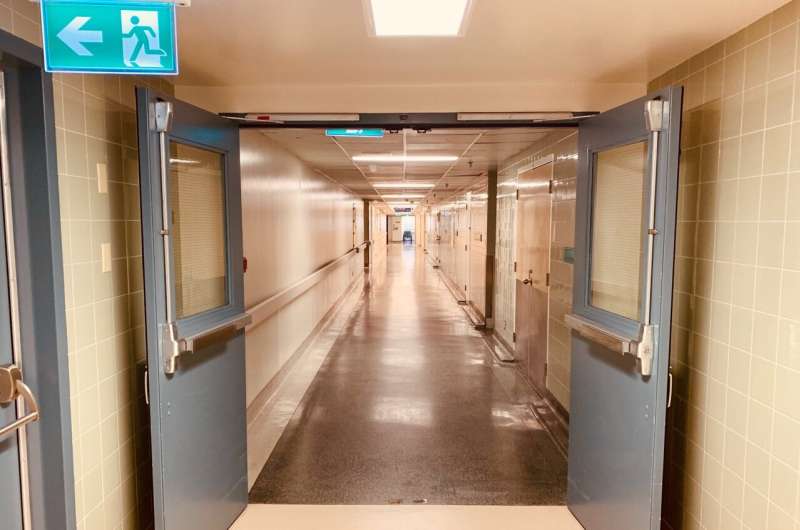Credit: Unsplash/CC0 Public Domain
The journal Chest recently published an important update to the 2014 consensus statement by the Task Force for Mass Critical Care (TFMCC) on providing mass critical care utilizing research gained through experiencing the 2020 COVID-19 pandemic.
The article, Mass Critical Care Surge Response during COVID-19: Implementation of Contingency Strategies A Preliminary Report of findings from the Task Force for Mass Critical Care, shares operational strategies to support hospitals and communities during mass critical care events.
Ten suggestions emphasizing the importance of maintaining contingency level care are outlined in the article. These include augmentation of the clinical workforce, rapidly responding to surges with resources or load-balancing patients to other hospitals' ICU beds, and broad use of telemedicine technology—all with the intent to maintain functionally equivalent care and avoid crisis care conditions.
Crisis level care is when contingency level care is not sustainable and care becomes prioritized or limited, leading to substantial risk of adverse outcomes and potential triage of scarce resources.
Jeffrey Dichter, MD, FCCP, member of the TFMCC and a co-author of the paper, says that "the objective of this paper is to share operational strategies at a hospital, health system and state level to continue to provide contingency level care and avoid crisis care during the pandemic. This includes early transfer strategies to further load-balance care along with several other critical suggestions."
Strategy proposals fall within four critical areas: Staffing, load-balancing, communication, and technology. Suggestions from each of these areas include:
- Staffing—We suggest integrating non-critical care trained staff coupled with expert critical care clinicians to provide a far greater amount of care than the ICU staff could provide without help and resilience strategies to support all healthcare staff.
- Load-Balancing—We strongly suggest active monitoring of resource strain determined by frontline clinical leaders and adding resources as available or load balancing (transferring) patients to hospitals with open ICU beds.
- Communication—We re-emphasize that designated clinicians should actively participate in hospital incident command structure, thereby improving situational awareness and ensuring bidirectional communication.
- Technology—We suggest hospitals apply telemedicine technology to augment critical care early and in the broadest sense possible.
More information: Jeffrey R. Dichter et al, Mass Critical Care Surge Response during COVID-19: Implementation of Contingency Strategies A Preliminary Report of findings from the Task Force for Mass Critical Care, Chest (2021). DOI: 10.1016/j.chest.2021.08.072
Journal information: Chest
Provided by Elsevier






















